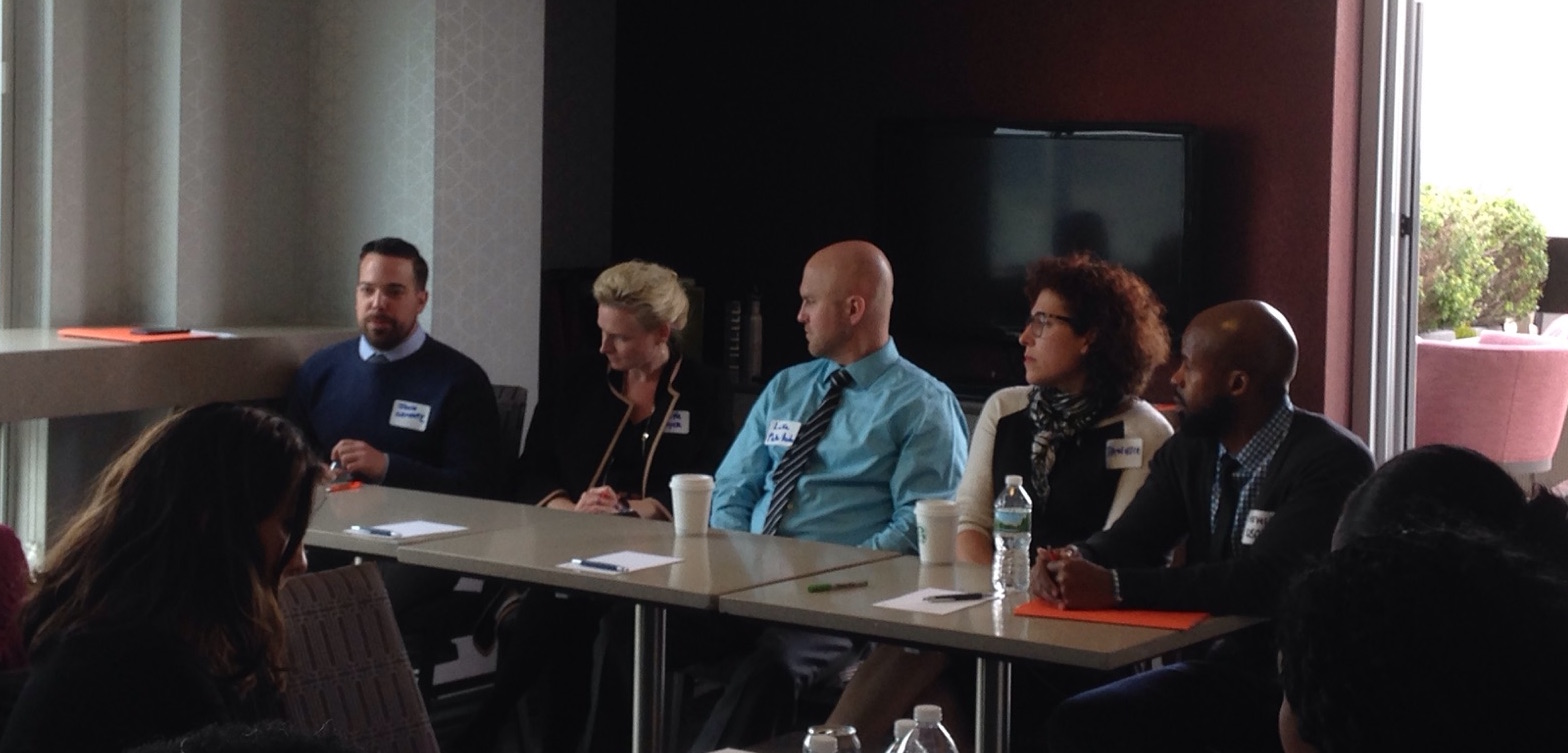Recently, Springpoint hosted a ‘shark tank’ style pitch event featuring presentations by three school design teams from the Cleveland Metropolitan School District. These teams are in the process of designing new high schools that will open in Cleveland this summer. The school designers pitched their models to groups of teachers, leaders and students for ideas and feedback.

We also heard tips, reflections and hard-won lessons from a panel of seasoned principals, including Luke Bauer from Urban Assembly Maker Academy, Harvey Chism and John Clemente from South Bronx Community Charter High School, Suzette Dyer from Urban Assembly School for Law & Justice and Danielle Salzberg from Frank McCourt High School.
We heard a lot of great advice throughout the day. Check out these top tips to help school designers in their planning process:
Big picture planning.
- Define the instructional model. It’s important for leaders and their teams to clearly articulate what students and adults are doing in classrooms every day (e.g., outline the role of technology, develop guidelines for small group discussions, etc). Think about your school’s ideal learning environment, what you want teaching and learning to look like, and be sure to set up checkpoints to look at quality.
- Calculate growth over time. Put into place some non-negotiable measures of success. Define what students and adults will be held accountable for out of the gate. Otherwise, things can become slippery and hard to assess.
- Self-assess regularly. Your school will not be perfect immediately. While this can be frustrating, focus on building structures that allow for improvement in a systematic and informed way.
- Prioritize. School design teams can’t do everything. Make sure you focus on key elements and iterations that will impact your school and community the most.
Fostering teamwork and collaboration.
- Define the roles of adults in the building. Decide what teachers will be asked to do when it comes to student engagement and community building. While it is important for them to support these areas, recognize that their first job is instructional, and don’t overuse them, especially in the first few years. And make sure that you are clear about what is an essential non-instructional responsibility, versus an optional one.
- Develop strong hiring practices. Don’t underestimate the importance of getting the right people on the bus. Recruit broadly and organize the hiring process so you can assess how candidates receive and respond to feedback. Vet your candidates thoroughly (e.g., reference checks, portfolio samples, Google searches) to flesh out the full profile of a candidate throughout the hiring process.
- Cultivate co-ownership. School design and iteration involves the whole school community; have design and iteration conversations with students and staff instead of at students and staff.
- Encourage teacher collaboration. Organize your day so that you can provide both time and systems for teachers to intentionally collaborate across subject areas. These opportunities help teams share norms, challenges, solutions, and instructional design materials for feedback and revision.
Operational and cultural considerations.
- Balance support and independence for students. Find a sweet spot between structure and autonomy. Gradually increase student agency throughout the year, and over the course of a student’s multi-year experience.
- Select strong, usable tech systems. Adults only have so much professional learning time to focus on non-instructional work. Pick a tech system that’s easy for them to learn, access and use.
- Communicate effectively with stakeholders. Make sure students, families and adults are on the same page with regard to your school’s grading policy and mastery-based approach. These shared understandings can streamline operations and boost morale.